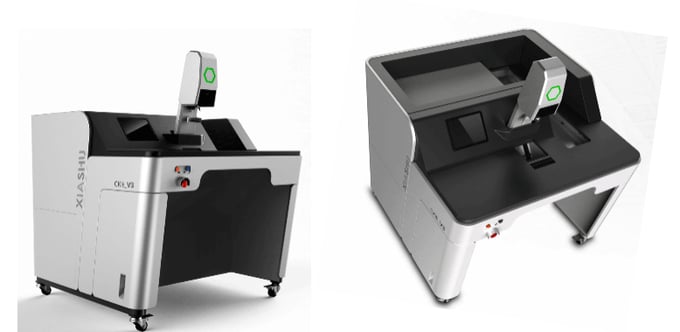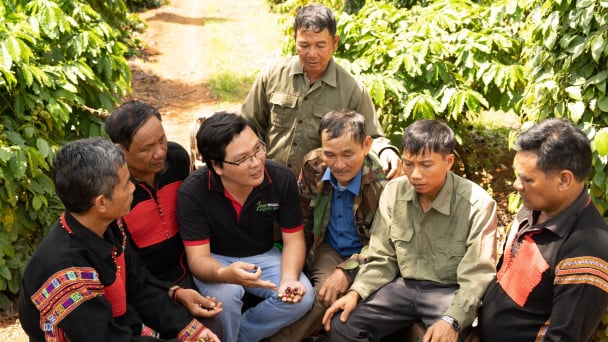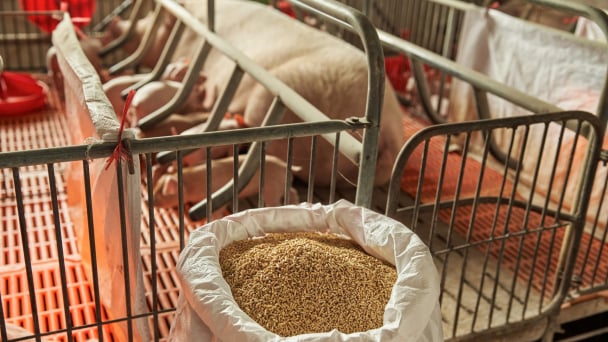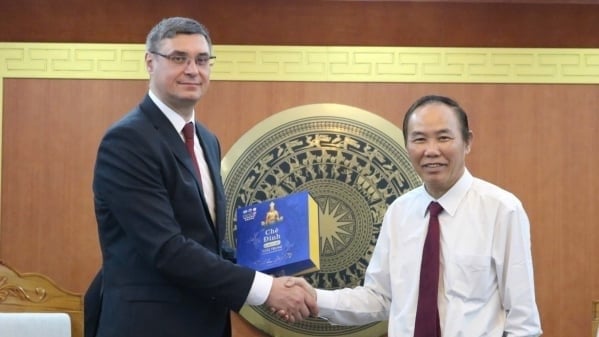May 24, 2025 | 03:25 GMT +7
May 24, 2025 | 03:25 GMT +7
Hotline: 0913.378.918
May 24, 2025 | 03:25 GMT +7
Hotline: 0913.378.918

Chick sex identification machine. Photo: Xiashu Technology.
It has developed mature commercial products in the fields of sex identification for breeding poultry, image weight estimation technology, intelligent farm monitoring systems, egg belt counting equipment, and AI robots for food slaughtering factories.
One-day-old chicken sexing is extremely difficult to identify manually. According to statistics, human operators need to be trained for at least 3 months to master the skills of sex identification through vent sexing by sight. Precision is largely affected by factors such as human learning ability, age, fatigue, and mental state. Powered by AI, the chick vent sexing machine can identify the sex of white, coloured broilers, layers, and turkeys with 98.5% accuracy, at a rate of 1,000 chicks per hour, and has been adopted in many GP plants worldwide.
An AI empowered feather sexing machine was developed to identify the gender of day-old chicks using computer vision. This machine is easy to operate and can achieve high accuracy with fast processing speed. The human operator simply needs to place the chick’s wings on the screen to accurately determine its gender, with an accuracy rate of up to 99%. The machine can process approximately 2,500 to 3,000 chicks per hour, and anyone can use it without prior training.
The chicken counting system uses ordinary surveillance cameras to count the number of chicks and identify abnormal chicken behaviour and dead chicks. This helps farmers stay informed about farm conditions and make timely management decisions. The system has been deployed on farms in China and Southeast Asia, and can count chickens, ducks, and other poultry.
Commercial egg-laying farms often struggle to track how many eggs are laid on each line every day, as well as their quality and specifications. Egg counting and quality detection model is mainly used for commercial layers, through which eggs on each conveyor belt can be counted, and defective products can be identified. Information such as egg quality, quantity, and weight can be extracted through the AI vision system.
The currently developed poultry image weighing system uses deep learning imaging technology to measure poultry weight with up to 98.5% accuracy, while also identifying male and female poultry. This image weighing system is effective for broilers, ducks, and turkeys. It is expected that this equipment will soon be available for market application. In addition to providing real-time weight data, the smart device will also create a time series prediction model using machine learning to predict future weight at various ages and provide corresponding regulatory suggestions.
In 2024, camera scale was developed using computer vision to determine the weight of chicks/ducks, calculate body weight, detect hook-offs, identify body surface defects, determine secondary products, and count the number of chickens/ducks in slaughterhouses. The system also includes a built-in robot that can automatically sort chickens with abnormal specifications or secondary products.
How many chicks/ducks have been slaughtered in the food plant? Many companies lack the ability to track this. Computer vision technology is applied to calculate the number of chicks and ducks in the slaughterhouse. Conventional counting systems use infrared sensors, but their accuracy is often compromised by many noises, such as people passing by. AI system reduces these inaccuracies by detecting not only the carcass but also the head, tail, feet, and wings, with an exceptionally high accuracy of 99.9%+.
These featured technologies and products are developed by Shanghai Xiashu Intelligent Technology. Xiashu Technology is a national high-tech enterprise, a Tongji University featured enterprise, and a Shanghai Artificial Intelligence Benchmark Enterprise. Xiashu is also the research team of the Tsinghua Environmental Innovation Institute and is responsible for the Key Laboratory of Digital Technology Integration for Healthy Poultry Farming under the Ministry of Agriculture of China. The company is primarily engaged in the research and development of artificial intelligence models in the fields of agriculture and animal husbandry. It is reported that these innovative AI technologies have formed various products, and have been sold in more than 23 countries in the world.
(PW)

(VAN) South Korea is currently the second-largest investor in Hai Phong in terms of the number of projects (186 projects) and the largest in terms of total registered investment capital, reaching USD 14.2 billion.

(VAN) As consumers become more environmentally conscious, legal regulations grow increasingly stringent...

(VAN) CJ Feed&Care officially launched the FCR improvement campaign called “2025 Find Challenge Reach” in April 2025. In Vietnam, this campaign is implemented by CJ Vina Agri.

(VAN) The swamp in Pho Thanh is gradually being covered with red mangrove, creating a favorable environment for producing clean, high-quality salt.

(VAN) The trade turnover of agro-forestry-fishery products is growing significantly, along with investment cooperation commitments that are opening up new development directions between Vietnam and Russia.

(VAN) Khanh Hoa is investing over 545 billion VND to develop 240 hectares of high-tech marine aquaculture in order to guarantee a consistent supply of seafood exports and achieve the USD 1 billion target.

(VAN) Minister of Agriculture and Environment Do Duc Duy held a meeting with Soopakij Chearavanont, Chairman of C.P. Group, on May 15.